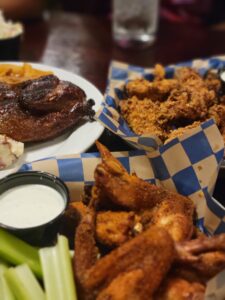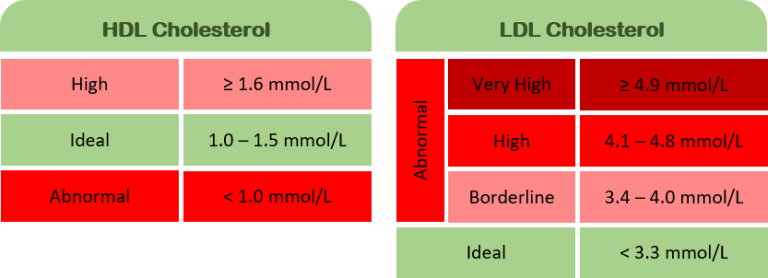Page Contents
We often hear about fat, oil, and trans fat. Do you know what are the differences? What are their relationships with cholesterol?
In this article, we will look into these fat products:
- understand their functions
- food sources
- risks of chronic conditions
- how to mitigate the risks

Fat
Fat appears as a solid product formed by saturated fat. It is commonly found in meat and dairy products. Our body stores fat and uses it for:
- metabolism and generates energy in the body
- absorb fat-soluble vitamins (A, D, E and K) and minerals
- insulate the body to keep warm
- cushion the delicate vital organs
Oil
In the form of unsaturated fat, it is known as oil. It is mostly extracted from plant and fish sources. In cooking, oil prevents food from sticking to the pan, uniformly distributes heat, increases the temperature, and adds flavours to the food.
2 types of fats
Saturated Fat (Unhealthy fat)
- Red meat, high-fat cuts of meat
- Lard
- Butter, cheese
- Ice-cream, chocolate
- Coconut oil, palm oil
- Baked goods
- Deep-fried food
- Processed food
Unsaturated Fat (Healthy fat)
- Avocados, avocado oil
- Olives, olive oil
- Peanut butter, peanut oil
- Vegetable oils (sunflower, corn, canola)
- Omega-3 from fatty fish (salmon and mackerel, tuna, sardines, trout)
- Nuts and seeds (almonds, peanuts, cashews, sesame seeds, chia seeds)
Trans fat
Apart from fat and oil, there is another type of fat called trans fat. Trans fat is made when hydrogen is added to vegetable oil through a process called hydrogenation. The purpose is to convert it to solid form, which gives it a longer shelf life at room temperature. Trans fat is commonly found in processed food such as:
- Commercial baked goods (cakes, cookies, pies, pastries, donuts)
- Vegetable shortening
- Microwavable popcorn
- Frozen pizza
- Refrigerated dough (pie crusts, pizza dough, cookie dough)
- Fried foods (e.g., French fries, fried chicken, onion rings, chips, crackers, nuggets)
- Non-dairy coffee creamer
- Stick margarine
Cholesterol
Cholesterol is the lipid product that is made in your liver and circulated in your body through blood stream. It is essential for creating vitamin D and enzymes needed for digestion, building cells, helping in bile production and making hormones.
There are 2 types of cholesterol: Low-Density Lipoprotein (LDL) cholesterol and High-Density Lipoprotein (HDL) cholesterol. According to Harvard Health Publishing, 80% of the cholesterol produced by your liver and intestines, while 20% are from your diet.
- LDL is the bad cholesterol from saturated fat. It forms plaque in the arteries (atherosclerosis) and causes heart attack and stroke.
- HDL is the good cholesterol secreted by the liver and small intestines. It can bring down LDL levels by removing cholesterol from plaques, ease inflammation, and stabilise heart rhythms.
Implications of high-fat diet
Consuming foods high in fat for a long period, especially saturated fat and trans fat, can raises the triglyceride and LDL cholesterol levels in the blood. High LDL in the bloodstream will build up plaques in the arteries, over time it may cause hardening and blockage in the blood vessels. Restricted blood flow will elevate the blood pressure (hypertension), arteries could rupture and cause internal bleeding and disruption of nutrient and oxygen supplies to the tissues. This would then lead to heart attack and stroke (Figure 1). Studies have also shown that high LDL can reduce the glomerular filtration rate (GFR) in the kidneys, and causes chronic kidney disease in the long run.

Ideal range for HDL and LDL cholesterol levels
The way to control cholesterol level is to maintain HDL and LDL at the ideal range (Figure 2). It is recommended to go for a blood test to check your lipid profile. Once you know your cholesterol levels, it will be easier for you to take necessary actions.
Take note, it may not be good when HDL cholesterol level is too high (above 1.6mmol/L). As shared in an article from WebMD, it could present the opposite outcome of slowing the plaques removal.

How to raise HDL and lower LDL cholesterol?
Not all fats are bad, your body still needs it for many essential functions. As the cholesterol levels work in regulated proportions of HDL and LDL, you can never eliminate LDL cholesterol and keep only HDL cholesterol, your liver will continue to produce it anyway.
To maintain HDL and LDL at ideal range, there are several things that we should do ‘more’, ‘reduce’, and ‘stop’ doing.
More
- Exercise
- Fatty fish, boost omega-3
- Antioxidant-rich foods
- Grains, beans and legumes
- High fibre fruits
- Fresh foods
- Cook with less oil, use unsaturated oil
- Boil, simmer, poach, braise, stew, and steam
Reduce
- Weight
- Sugar intake
- Red meat
- Alcohol
- Stress
Stop
- Smoking
- Products with animal fat
- Baked goods and snacks with trans fat
- Refrigerated dough
- Processed foods
- Deep-fried foods
- Shallow frying and deep frying
Conclusion
Now that you have read about salt and fat. Starting today, learn to observe what you add to your cooking and what you put inside your mouth. Take conscious steps to appreciate the ingredients, be accountable to your own health and wellness.
Coming up next is the popular topic of sugar and chronic conditions. Stay tune!
